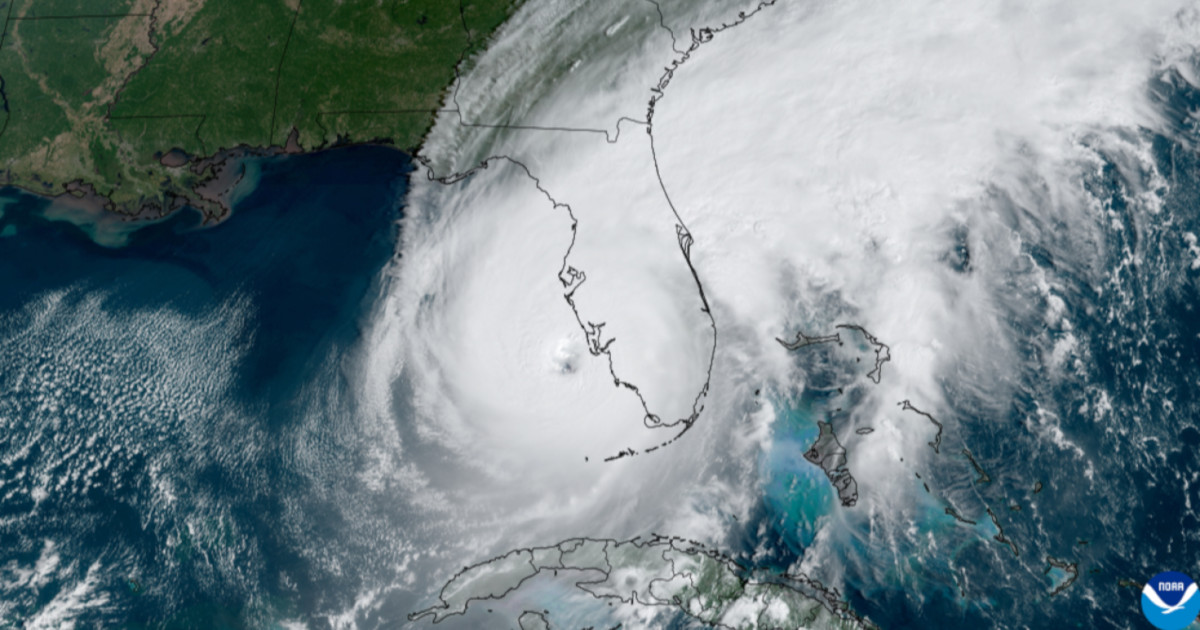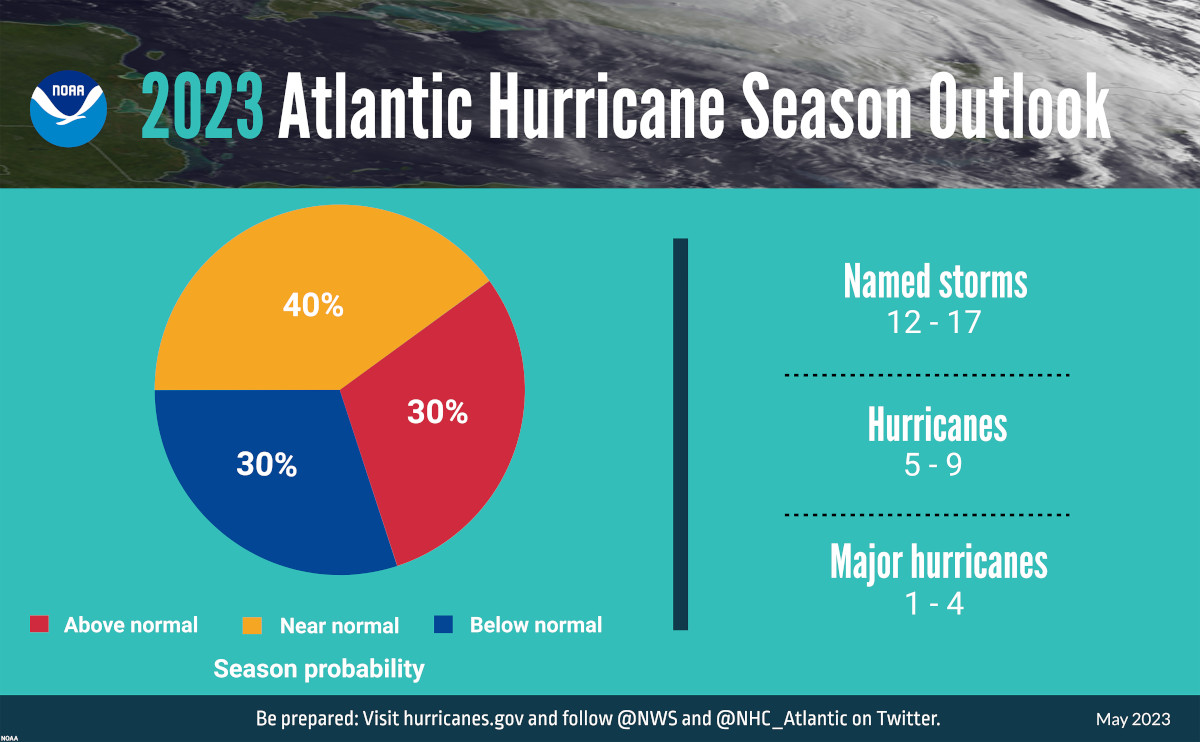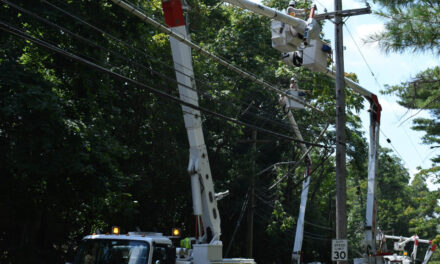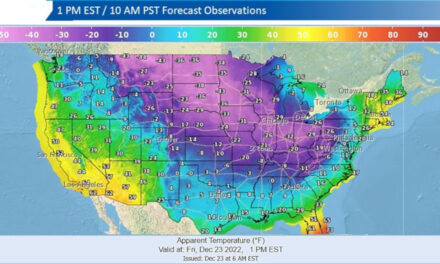Hurricane Ian captured by an NOAA GOES satellite over the Barrier Islan Cayo Capo, Florida on September 28, 2022.
May 25, 2023, College Park, Maryland: The National Ocean and Atmospheric Administration’s Climate Prediction Center issued its pre-season forecast on the 2023 Atlantic Hurricane Season. Two factors under consideration played a large role in the forecast. The El Nino Southern Oscillation is expected to shift to El Nino Conditions by the peak of the season. Atlantic Ocean Sea Surface Temperatures (SSTs) are above normal.
Hurricane Season 2023: June 1 to November 30
Complete 2023 Atlantic Hurricane Season Prediction, Outlook, Forecast, and Updates
An El Nino in the eastern equatorial Pacific Ocean increases wind shear over the Atlantic, which inhibits tropical cyclone formation. Tropical Cyclones get their energy from warm ocean water. As a result, the warm SSTs and the increased wind shear will balance the season to about average, or near normal, according to the NOAA meteorologists.
This year, the Climatge Prediction Center predicts a 40% chance of a normal or average season, a 30% chance for above normal activity, and 30% chance of below normal activity.
30-Year Average from 1991 to 2020 vs 2023’s Predictions
| Cyclone Strength | Average or Normal Season | 2023 Predictions |
| Named Storms (Tropical Storm) | 14.4 | 12 to 17 |
| Hurricanes | 6 | 5 to 9 |
| Major Hurricanes | 3.2 | 1 to 4 |
NOAA has a 70% confidence that the number of storms will fall within these ranges.
A tropical depression has sustained winds of less than 39 MPH. When sustained winds reach 39 MPH, forecasters name the storm from the next name in the list for that year. At 74 MPH, the tropical storm becomes a hurricane. Major hurricanes (category 3, 4, or 5) have sustained winds of 111 MPH or higher. The strongest hurricanes can reach wind speeds up to 190 MPH.
The record breaking 2020 season had 30 named storms, ten more than the highest May forecast. When the number of storms exceeded the number of names on the list, the National Hurricane Center began naming storms using the Greek alphabet. That system has since been retired and a new, alternate list of names will provide storm names if that year’s list is exhausted.
New Hurricane Season Prediction Tools Improve Forecasts
An important change in NHC forecasts is the increase from the 2-day 5-day tropical forecast to a longer range 2-day 7-day tropical forecast. It gives emergency management agencies more time to prepare for a disaster and gives local residents more time to prepare their homes or evacuate ahead of the storm.
Also this year, the Probabilistic Storm Surge Model got an upgrade in May. The storm surge model provides forecasts for the contiguous United States, Puerto Rico, and the U.S. Virgin Islands. The upgrade provides the capability to model two storm simultaneously.
This year, the NOAA increased its supercomputing system capacity by 20 percent. It can now model two storms at the same time.
Other changes include the Hurricane Analysis and Forecast System (HAFS). It will run parallel with the current system this year. Analysis with this system of the 2020-2022 seasons shows an improvement of 10-15% in track forecasts over existing models. In the future, the NOAA plans for the HAFS to become their primary forecast model.
Hurricane Preparedness
- Hurricane Hazards and Risk Factors
- Make a Hurricane Evacuation Plan
- Hurricane Preparedness Kits and Supplies
- Hurricane Insurance Checkup and Updates
- Prepare Your Home for Hurricanes
- Help Neighbors with Hurricane Preparedness
- Complete Your Hurricane Preparedness Plan
- Emergency Preparedness Tips
- How to Prepare for a Power Outage
- 10 Tips to Survive a Hurricane Disaster
- FEMA Recommends a Generator
- Hurricane Disaster Preparedness
By the time forecasters determine a storm will make landfall near you, the amount of time it will take to get your home and family ready, stock up on supplies, or even figure out how to evacuate will make it virtually impossible for you to fully prepare for the coming storm.
Once hurricane watches are issued, you have less than 48 hours before the storm will arrive.
After forecasters issue a hurricane warning, the time has dwindled to 36 hours, the store shelves are empty of non-perishable food and water, and the materials to reinforce your home long gone.
The time to prepare is now, before the season produces a storm that heads your way.















